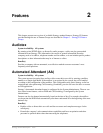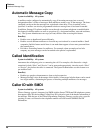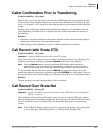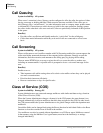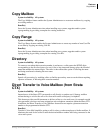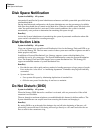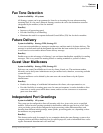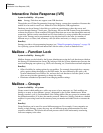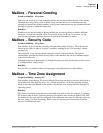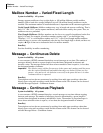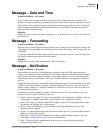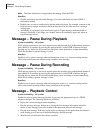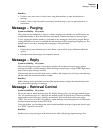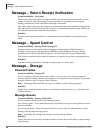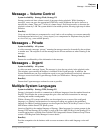
Features
Interactive Voice Response (IVR)
26 Stratagy General Description 01/03
Interactive Voice Response (IVR)
System Availability: All systems
Note Stratagy Flash does not support some IVR functions.
Through the use of Token Programming Language Stratagy systems have a number of features that
enables it to be used for small basic Interactive Voice Response (IVR) applications.
Databases can be on Stratagy’s hard drive or reside on a mainframe or other data server and
accessed through Stratagy’s serial ports. The Stratagy ES has the IVR Feature Group that enables
software developers to create complete IVR applications that can access data through the network
connection. Queries can be constructed in a free-form fashion, by using variables that are entered
by the caller. Stratagy can be programmed to play this data back to the caller in a number of
different ways: as a date, time, monetary value (in dollars and cents), or simply as a number.
Benefit(s)
Stratagy provides a rich programming language (see “Token Programming Language” on page 39)
for expressing system actions and interactions with the caller, as well as database access.
Mailbox – Function Lock
System Availability: Stratagy ES
Mailbox features can be locked by the System Administrator using the Lock function provided on
the Stratagy ES Administration screens. By locking a field, the System Administrator prevents the
user from changing user options (e.g., DND, call screening, etc.) from his/her touchtone telephone.
Benefit(s)
• Offers flexibility for setting options by user mailbox. For example, there might be a company
policy against setting the mailbox to the DND mode. For users affected by this policy, the
System Administrator sets DND to No, and uses the Lock function to lock the option, so that
users are not given the opportunity to change the setting.
• Eliminates unauthorized personnel from changing mailbox settings.
Mailbox – Groups
System Availability: All systems
Groups control which mailboxes a caller can access to leave messages, etc. Each mailbox can
belong to as many as four different “groups” designated by the System Administrator. When
Stratagy transfers a call, it first determines if the calling mailbox has any groups in common with
the destination mailbox. If it does, the transfer proceeds. Otherwise, Stratagy switches to a default
mailbox for processing based on the current system port number and either blocks or reroutes the
call.
Benefit(s)
Group Partitions can be used for several different purposes. For example, if two companies are
sharing a single Stratagy system, they may use two different group partition numbers for their
respective mailboxes. This blocks the call and prevents callers from inadvertently transferring
from one company to the other.




